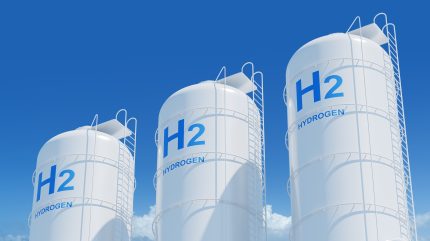
The US Treasury department announced on Friday (3 January) the final rules for the section 45V Clean Hydrogen Production Tax Credit, which included notable adjustments from the draft plan published in December 2023.
The 45V tax credit, established under the Inflation Reduction Act (IRA), aims to spur investment in the US hydrogen industry, bolstering clean hydrogen production while ensuring adherence to global emissions standards.

Discover B2B Marketing That Performs
Combine business intelligence and editorial excellence to reach engaged professionals across 36 leading media platforms.
A nuclear pathway opened
One of the most significant changes in the final rules is the inclusion of nuclear power as a qualifying energy source for electrolytic hydrogen production, provided the project helps to prevent the retirement of nuclear reactors.
“This [inclusion of nuclear] reflects the fact that certain nuclear reactors are at greater risk of retirement based on certain economic factors, and if a nuclear retirement is averted, then the additional demand from hydrogen production will not have induced emissions,” the Treasury said.
With this expanded eligibility, nuclear energy can now qualify for the $3 per kilogram (kg) credit, as long as life cycle greenhouse gas (GHG) emissions remain below the statutory limit of 4kg of CO₂ equivalent per kilogram of hydrogen produced.
The change was driven by industry concerns that limiting the benefits of the credit to renewable energy would hinder the hydrogen sector’s growth. Notably, three of the seven hydrogen hubs that secured the US Department of Energy’s $7bn grant in 2023 feature existing nuclear power.

US Tariffs are shifting - will you react or anticipate?
Don’t let policy changes catch you off guard. Stay proactive with real-time data and expert analysis.
By GlobalDataThe decision has been favourable for the nuclear industry, with shares of nuclear power companies such as Constellation soaring following the announcement.
However, it has also been met with controversy, with environmental groups and renewable energy advocates arguing that only hydrogen made using new clean energy sources should be eligible for the benefits.
Good news for blue hydrogen
The guidelines for methane-based hydrogen, which currently constitutes most of the world’s hydrogen, have been another point of contention.
Critics have long alleged methane-based hydrogen of ‘greenwashing’, claiming that using fossil fuels for the energy-intensive hydrogen production process could result in a higher overall use of carbon-emitting sources.
These concerns were somewhat alleviated when the 2023 draft plan hinted at a tiered system in which hydrogen producers using fossil fuels would get less benefits.
The final rules, however, state that the hydrogen tax credit, which ranges from $0.60 to $3.00/kg, will depend on the life cycle GHG emissions of hydrogen production. This system may grant the full credit ($3/kg) to companies producing hydrogen from natural gas, provided they use carbon capture and storage, as well as those that produce hydrogen from natural gas alternatives such as wastewater, animal manure and landfill gas.
Hydrogen from coal mine methane is expected to only qualify for lower credits.
According to the Treasury, the final rules will “aim to enhance the accuracy of upstream methane leakage rates used in determining the credit value” to ensure proper categorisation of different credit tiers.
Senior director at the Clean Air Task Force, Conrad Schneider, told the Washington Post that although the tax credit is a positive development, accurately tracking emissions from hydrogen production could become “impossible” if the incoming Trump administration loosens regulations on methane and emissions reporting.
Delayed deadline for hourly certification
The final rules have also delayed the deadline for green hydrogen producers to demonstrate that their production is powered by renewables on an hourly basis, rather than annually, to be eligible for credits.
The start date to meet hourly certification requirements has been pushed back two years from the draft plan to 2030, giving producers more time to adjust. The new deadline now aligns with the EU’s standards.
Despite the hydrogen tax credit and relevant efforts to help position the US as a leader in the global hydrogen market alongside other notable players such as the EU, the US hydrogen industry faces uncertainty as Trump prepares to take office again.
The president-elect’s vocal disapproval of clean energy initiatives including the IRA has raised concerns about the future of the sector, which has benefitted significantly from federal support.





